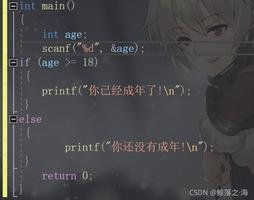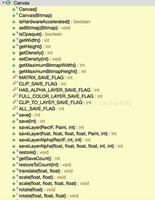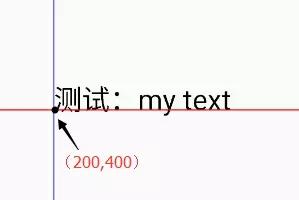TypeScript + Vue 实现某个canvas科幻背景 -- 1

在TypeScript + Vue项目中实现一个酷炫的Canvas运动背景,实现代码如下:
<template> <div id="main">
<div id="bg-main">
<canvas id="bg"></canvas>
</div>
</div>
</template>
<script lang="ts">
import Vue from "vue";
import Component from "vue-class-component";
let tick = 0,
options = {
len: 20,
count: 50,
baseTime: 10,
addedTime: 10,
dieChance: .01,
spawnChance: .5,
sparkChance: .1,
sparkDist: 10,
sparkSize: 2,
color: `hsl(tone, 100%, light%)`,
baseLight: 50,
addedLight: 10,
shadowToTimePropMult: 6,
baseLightInputMultiplier: .01,
addedLightInputMultiplier: .02,
ox: 0,
oy: 0,
repaintAlpha: .04,
toneChange: .1
},
lines = new Array(),
dieX: number = 0,
dieY: number = 0,
clientHeight: number = 0,
clientWidth: number = 0,
baseRadius = Math.PI * 2 / 6
@Component
export default class Main extends Vue {
name = "ContentMain"
mounted(){
const bg = document.getElementById('bg') as HTMLCanvasElement,
bgMain = document.getElementById('bg-main') as HTMLDivElement
let ctx = bg.getContext('2d') as CanvasRenderingContext2D
clientWidth = bg.width = bgMain.clientWidth
clientHeight = bg.height = bgMain.clientHeight
options.ox = clientWidth / 2
options.oy = clientHeight / 2
dieX = clientWidth / 2 / options.len
dieY = clientHeight / 2 / options.len
ctx.fillStyle = 'black'
ctx.fillRect(0, 0, clientWidth, clientHeight)
function loop(){
// setTimeout(()=>requestAnimationFrame(loop), 50)
requestAnimationFrame(loop)
++tick;
ctx.globalCompositeOperation = "source-over"
ctx.shadowBlur = 0
ctx.fillStyle = "rgba(0, 0, 0, alp)".replace('alp', options.repaintAlpha.toString())
ctx.fillRect(0, 0, clientWidth, clientHeight)
ctx.globalCompositeOperation = "lighter"
if(lines.length < options.count && Math.random()<options.spawnChance)
lines.push(new Line(ctx))
lines.map(line=>line.step())
}
window.addEventListener('resize', (e:Event)=>{
clientWidth = bg.width = bgMain.clientWidth
clientHeight = bg.height = bgMain.clientHeight
ctx.fillStyle = 'black'
ctx.fillRect(0, 0, clientWidth, clientHeight)
options.ox = clientWidth / 2
options.oy = clientHeight / 2
dieX = clientWidth / 2 / options.len
dieY = clientHeight / 2 / options.len
})
loop()
}
}
interface Option {
readonly len: number;
readonly count: number;
readonly baseTime: number;
readonly addedTime: number;
readonly dieChance: number;
readonly spawnChance: number;
readonly sparkChance: number;
readonly sparkDist: number;
readonly sparkSize: number;
readonly color: string;
readonly baseLight: number;
readonly addedLight: number;
readonly shadowToTimePropMult: number;
readonly baseLightInputMultiplier: number;
readonly addedLightInputMultiplier: number;
ox: number;
oy: number;
readonly repaintAlpha: number;
readonly toneChange: number;
}
class Line {
private x = 0;
private y = 0;
private addedX = 0;
private addedY = 0;
private radius = 0;
private lightInputMultiplier = 0;
private color = "";
private cumulativeTime = 0;
private time = 0;
private targetTime = 0;
private ctx: CanvasRenderingContext2D
constructor(ctx: CanvasRenderingContext2D) {
this.ctx = ctx
this.reset()
}
reset(): void {
this.x = 0;
this.y = 0;
this.addedX = 0;
this.addedY = 0;
this.radius = 0;
this.lightInputMultiplier =
options.baseLightInputMultiplier +
options.addedLightInputMultiplier * Math.random();
this.color = options.color.replace(
"tone",
(options.toneChange * tick).toString()
);
this.cumulativeTime = 0;
this.beginPhase();
}
beginPhase(): void {
this.x += this.addedX;
this.y += this.addedY;
this.time = 0;
this.targetTime = (options.baseTime + options.addedTime * Math.random()) | 0;
this.radius += baseRadius * (Math.random() < 0.5 ? 1 : -1);
this.addedX = Math.cos(this.radius);
this.addedY = Math.sin(this.radius);
if ( Math.random() < options.dieChance ||
this.x > dieX || this.x < -dieX ||
dieY > dieY || this.y < -dieY )
this.reset()
}
step() {
++this.time
++this.cumulativeTime
if (this.time >= this.targetTime) this.beginPhase();
let prop = this.time / this.targetTime,
wave = Math.sin(prop * Math.PI / 2),
x = this.addedX * wave,
y = this.addedY * wave;
this.ctx.shadowBlur = prop * options.shadowToTimePropMult;
this.ctx.fillStyle = this.ctx.shadowColor = this.color.replace(
"light",
(options.baseLight +
options.addedLight *
Math.sin(this.cumulativeTime * this.lightInputMultiplier)).toString()
);
this.ctx.fillRect(
options.ox + (this.x + x) * options.len,
options.oy + (this.y + y) * options.len,
2, 2);
if (Math.random() < options.sparkChance)
this.ctx.fillRect(
options.ox +
(this.x + x) * options.len +
Math.random() * options.sparkDist * (Math.random() < 0.5 ? 1 : -1) - options.sparkSize / 2,
options.oy +
(this.y + y) * options.len +
Math.random() * options.sparkDist * (Math.random() < 0.5 ? 1 : -1) - options.sparkSize / 2,
options.sparkSize,
options.sparkSize
);
}
}
</script>
<style lang="scss">
#main {
position: relative;
top: 5vh;
left: 0;
margin: 0;
width: 100%;
height: 80%;
margin-top: 0;
font-family: "Avenir", Helvetica, Arial, sans-serif;
-webkit-font-smoothing: antialiased;
-moz-osx-font-smoothing: grayscale;
text-align: center;
color: #2c3e50;
#bg-main {
margin: 0;
width: 100%;
height: 100%;
padding: 0;
z-index: 0;
}
}
</style>
代码仅供参考学习
以上是 TypeScript + Vue 实现某个canvas科幻背景 -- 1 的全部内容, 来源链接: utcz.com/z/377370.html








